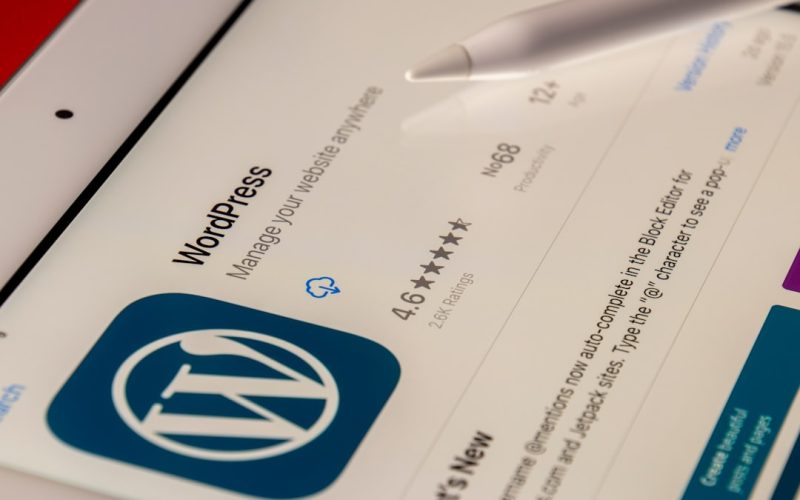As I delve into the world of Search Engine Optimization (SEO) for WordPress, I quickly realize that understanding the fundamentals is crucial for anyone looking to enhance their website’s visibility. SEO is essentially the practice of optimizing a website to rank higher in search engine results pages (SERPs). This involves a variety of techniques and strategies aimed at improving both the quality and quantity of traffic to my site.
WordPress, being one of the most popular content management systems, offers a plethora of tools and features that can significantly aid in this optimization process.
One of the first things I learned is that SEO is not just about keywords; it encompasses a wide range of factors including site speed, mobile-friendliness, and user experience.
By grasping these basics, I can better navigate the complexities of SEO and implement effective strategies tailored to my WordPress site.
Additionally, understanding how search engines work—crawling, indexing, and ranking—provides me with a solid foundation to build upon. This knowledge empowers me to make informed decisions that can lead to improved search engine rankings and ultimately, greater visibility for my content.
Table of Contents
ToggleKey Takeaways
- Understanding the basics of SEO for WordPress is essential for improving your site’s visibility and ranking on search engines.
- Choosing the right keywords for your WordPress site involves thorough research and understanding of your target audience’s search behavior.
- Optimizing your WordPress site’s content for SEO requires strategic placement of keywords, high-quality content, and proper formatting.
- Utilizing SEO-friendly themes and plugins for WordPress can help improve your site’s performance and user experience, leading to better SEO results.
- Creating an effective internal linking strategy for SEO can help search engines navigate and understand the structure of your WordPress site, ultimately improving its ranking.
Choosing the Right Keywords for Your WordPress Site
Brainstorming and Researching Keywords
I often start by brainstorming topics relevant to my niche and then use keyword research tools to identify popular search terms associated with those topics. This process not only helps me understand what my audience is searching for but also allows me to uncover long-tail keywords that may have less competition.
Analyzing Keyword Data
Once I have a list of potential keywords, I analyze their search volume and competition level. High search volume indicates that many people are searching for that term, while low competition suggests that it may be easier for me to rank for it.
Aligning Content with Keywords
I also consider the intent behind the keywords—whether users are looking for information, products, or services. By aligning my content with the right keywords, I can create valuable resources that meet my audience’s needs and improve my chances of ranking higher in search results.
Optimizing Your WordPress Site’s Content for SEO

Content optimization is where the magic happens in my SEO strategy. After selecting the right keywords, I focus on incorporating them naturally into my content. This includes using keywords in titles, headings, and throughout the body of my articles.
However, I must be careful not to overstuff my content with keywords, as this can lead to penalties from search engines. Instead, I aim for a balance that enhances readability while still signaling to search engines what my content is about. In addition to keyword placement, I pay attention to other elements such as meta descriptions and alt text for images.
Crafting compelling meta descriptions not only helps improve click-through rates but also provides search engines with a summary of my content. Similarly, using descriptive alt text for images not only aids in accessibility but also contributes to SEO by providing additional context for search engines. By optimizing all aspects of my content, I can create a comprehensive strategy that boosts my site’s visibility and attracts more organic traffic.
Utilizing SEO-Friendly Themes and Plugins for WordPress
| Themes and Plugins | SEO-Friendly Features |
|---|---|
| Yoast SEO | Meta tags, XML sitemaps, breadcrumbs, and more |
| All in One SEO Pack | XML sitemaps, meta tags, social media integration |
| Schema Pro | Rich snippets, schema markup, structured data |
| GeneratePress | Lightweight, fast, built-in schema markup |
| Schema | Rich snippets, schema markup, structured data |
Choosing the right theme for my WordPress site is another essential aspect of SEO. An SEO-friendly theme is designed with best practices in mind, ensuring that my site loads quickly and is easy to navigate. When selecting a theme, I look for features such as responsive design, clean code, and compatibility with popular SEO plugins.
A well-structured theme not only enhances user experience but also makes it easier for search engines to crawl and index my site. Speaking of plugins, I have found that utilizing SEO plugins can significantly streamline my optimization efforts. Plugins like Yoast SEO or All in One SEO Pack provide valuable insights and tools that help me optimize my content effectively.
These plugins offer features such as keyword analysis, readability checks, and XML sitemap generation, which are invaluable for improving my site’s SEO performance. By leveraging these resources, I can ensure that my WordPress site is not only visually appealing but also optimized for search engines.
Creating an Effective Internal Linking Strategy for SEO
Internal linking is a powerful yet often overlooked aspect of SEO that I have come to appreciate. By strategically linking to other pages within my own site, I can enhance user navigation and keep visitors engaged longer. This not only improves the overall user experience but also helps search engines understand the structure of my site and the relationship between different pieces of content.
When creating internal links, I focus on using descriptive anchor text that provides context about the linked page. Moreover, an effective internal linking strategy can distribute page authority throughout my site. By linking from high-authority pages to newer or less popular content, I can help boost their visibility in search results.
I also make it a point to regularly review and update my internal links as I add new content or make changes to existing pages. This ongoing effort ensures that my internal linking strategy remains effective and contributes positively to my site’s overall SEO performance.
Leveraging Image Optimization for Better SEO on WordPress

Images play a significant role in enhancing the visual appeal of my WordPress site, but they can also impact SEO if not optimized properly. Large image files can slow down page load times, which negatively affects user experience and search engine rankings. To combat this issue, I focus on compressing images before uploading them to my site.
There are various tools available that allow me to reduce file sizes without sacrificing quality, ensuring that my images load quickly. In addition to file size optimization, I pay close attention to image alt text and titles. Alt text serves as a description of the image for both users and search engines, making it an essential component of image optimization.
By including relevant keywords in my alt text while accurately describing the image, I can improve its chances of appearing in image searches and contribute to overall SEO efforts. This dual approach—optimizing file sizes and providing descriptive alt text—ensures that images enhance rather than hinder my site’s performance.
Mastering On-Page SEO Techniques for WordPress
On-page SEO techniques are fundamental in ensuring that each page on my WordPress site is optimized for search engines. One of the first steps I take is to create unique and compelling title tags for each page. A well-crafted title tag not only includes relevant keywords but also entices users to click through from search results.
Additionally, I ensure that each page has a clear and concise meta description that summarizes its content effectively. Another important aspect of on-page SEO is the use of header tags (H1, H2, H3) to structure my content logically. By organizing my content with appropriate header tags, I make it easier for both users and search engines to navigate through the information presented on each page.
Furthermore, I incorporate relevant keywords into these headers where appropriate, reinforcing the topic of the page without compromising readability. Mastering these on-page techniques allows me to create a well-optimized site that appeals to both users and search engines alike.
Implementing Schema Markup for Enhanced SEO on WordPress
Schema markup is an advanced technique that I have found incredibly beneficial for enhancing my site’s SEO performance. By adding structured data to my WordPress site, I provide search engines with additional context about my content. This can lead to rich snippets in search results—such as star ratings or product prices—that make my listings more attractive to users.
Implementing schema markup may seem daunting at first, but there are plugins available that simplify the process significantly. I often focus on specific types of schema markup relevant to my content type—be it articles, products, or events—to ensure maximum effectiveness. By doing so, I increase the likelihood of standing out in SERPs and attracting more clicks from potential visitors.
The added visibility from rich snippets can lead to higher click-through rates and ultimately contribute positively to my site’s overall SEO strategy.
Understanding the Importance of Mobile Optimization for SEO on WordPress
In today’s digital landscape, mobile optimization has become paramount for any website’s success—including mine. With an increasing number of users accessing websites via mobile devices, search engines like Google prioritize mobile-friendly sites in their rankings. To ensure that my WordPress site is optimized for mobile users, I choose responsive themes that automatically adjust to different screen sizes.
Additionally, I regularly test my site’s mobile performance using tools like Google’s Mobile-Friendly Test. This allows me to identify any issues that may hinder user experience on mobile devices—such as slow loading times or difficult navigation—and address them promptly. By prioritizing mobile optimization, I not only improve user experience but also enhance my site’s chances of ranking higher in search results.
Utilizing Social Media Integration for Improved SEO on WordPress
Social media integration is another vital component of my overall SEO strategy on WordPress. While social media signals may not directly impact search rankings, they play a significant role in driving traffic to my site and increasing brand visibility. By incorporating social sharing buttons into my posts and pages, I encourage visitors to share my content across their networks—expanding its reach exponentially.
Moreover, maintaining an active presence on social media platforms allows me to engage with my audience directly and promote new content effectively. Sharing links back to my website from social media posts not only drives traffic but also creates opportunities for backlinks as others discover and share my work. This symbiotic relationship between social media and SEO enhances both aspects of my online presence.
Monitoring and Analyzing Your WordPress Site’s SEO Performance
Finally, monitoring and analyzing my WordPress site’s SEO performance is crucial for ongoing success. Utilizing tools like Google Analytics and Google Search Console provides me with valuable insights into how users interact with my site and how well it ranks in search results. By regularly reviewing key metrics such as organic traffic, bounce rates, and keyword rankings, I can identify areas for improvement and adjust my strategies accordingly.
I also pay attention to competitor analysis—keeping an eye on what works well for others in my niche can provide inspiration and inform my own tactics. By continuously monitoring performance data and adapting based on insights gained from analytics tools, I ensure that my SEO efforts remain effective over time. This commitment to ongoing evaluation allows me to stay ahead in the ever-evolving landscape of digital marketing.
In conclusion, mastering SEO for WordPress requires a multifaceted approach encompassing various strategies—from keyword selection and content optimization to technical enhancements like schema markup and mobile optimization. By implementing these techniques diligently and continuously monitoring performance metrics, I can significantly improve my site’s visibility in search engine results and attract more organic traffic over time.
If you are looking to maximize your website’s potential with WordPress, you may also be interested in learning more about WordPress hosting. Check out this article for tips on choosing the right hosting provider for your WordPress site. Additionally, if you want to take your WordPress skills to the next level, consider mastering WordPress web development. com/mastering-wordpress-web-development/’>This article offers valuable insights and techniques for becoming a proficient WordPress developer.
FAQs
What is SEO?
SEO stands for Search Engine Optimization. It is the practice of increasing the quantity and quality of traffic to your website through organic search engine results.
Why is SEO important for WordPress websites?
SEO is important for WordPress websites because it helps them rank higher in search engine results, which in turn increases their visibility and drives more organic traffic to the site.
What are some SEO tips for WordPress beginners in 2025?
Some SEO tips for WordPress beginners in 2025 include optimizing website speed, using responsive design, creating high-quality content, optimizing images, using SEO-friendly URLs, and utilizing plugins like Yoast SEO.
How can beginners optimize website speed for SEO on WordPress?
Beginners can optimize website speed for SEO on WordPress by using a reliable web hosting provider, optimizing images, using a content delivery network (CDN), and minimizing the use of unnecessary plugins and scripts.
What is responsive design and how does it impact SEO for WordPress websites?
Responsive design is an approach to web design that makes web pages render well on a variety of devices and window or screen sizes. It impacts SEO for WordPress websites by providing a better user experience, which can lead to lower bounce rates and higher search engine rankings.
What are some best practices for creating high-quality content for SEO on WordPress?
Some best practices for creating high-quality content for SEO on WordPress include conducting keyword research, writing engaging and informative content, using proper headings and subheadings, and optimizing meta descriptions and title tags.
How can beginners optimize images for SEO on WordPress?
Beginners can optimize images for SEO on WordPress by using descriptive file names and alt text, compressing images to reduce file size, and using responsive images that are appropriately sized for different devices.
What are SEO-friendly URLs and how can beginners use them on WordPress?
SEO-friendly URLs are URLs that are designed to meet the needs of users and searchers. Beginners can use them on WordPress by creating descriptive and readable URLs, using relevant keywords, and avoiding the use of special characters and unnecessary parameters.
How can beginners utilize plugins like Yoast SEO for SEO on WordPress?
Beginners can utilize plugins like Yoast SEO for SEO on WordPress by optimizing meta titles and descriptions, generating XML sitemaps, analyzing content for readability and keyword usage, and implementing other on-page SEO best practices.




